Heavy Metal Thunder: The Origins Of Heavy Metal
The origins of heavy metal are often disputed… We attempt to track down the history of the term and answer the question, Where does heavy metal come from?
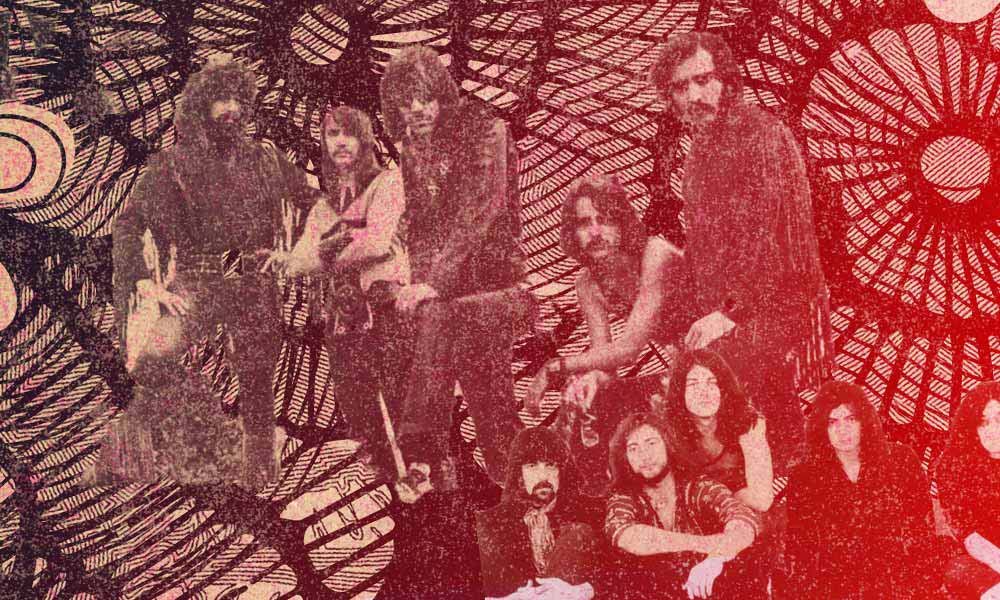
Where does metal music come from and how did it get its name?
In a technical sense, heavy metal was born in 1839. It’s a chemistry term describing a loosely connected set of metals defined as frequently being toxic to humans – these include lead, iron, mercury, and lithium. Over a century later, the term heavy metal found its way into literature when it appeared in William S. Burroughs 1961 novel, The Soft Machine, in reference to one of its characters, Uranian Willy: The Heavy Metal Kid. Burroughs told The Paris Review: “I felt that heavy metal was sort of the ultimate expression of addiction, that there’s something actually metallic in addiction, that the final stage reached is not so much vegetable as mineral.”
Six years later, the term heavy metal crossed over into music through a classic rock song. Steppenwolf’s “Born to be Wild,” recorded in 1967 and released in 1968 on their first long-playing record, Steppenwolf, contained the famous lyric: “I like smoke and lightnin’, heavy metal thunder.”
It was in later 1970 that the first use of “heavy metal” appeared when describing music. It occurred in a review of Humble Pie’s “As Safe As Yesterday Is” in Rolling Stone magazine by “Metal Mike Saunders.”
Early origins
Like many other musical styles, heavy metal evolved not only in one place at one time, but in many places at once. From California and New York, across the Atlantic to England, especially in Birmingham in the country’s industrial heartland. The sound evolved in many ways, most noticeably through bands like Cream, Blue Cheer, Iron Butterfly, and Deep Purple.
It was in 1966 that Cream released their first album Fresh Cream. A mix of blues, rock, and pop – the newly formed “supergroup” was very definitely finding its “sound.” The track “Sweet Wine,” with its rolling toms, rocking instrumental section, and heavy stabs in the chorus lent itself more to the future sound of heavy metal than the rest of the pop/blues rock of the album. It is their rendition of a Muddy Waters tune “Rollin’ and Tumblin’” that hints at the metal sound that was to come. Early Cream was to prove a major influence in the harder rock sound of the late 60s and all through the 70s.
By 1967, the heavy gears started to turn. Cream released its second album, Disraeli Gears, with “Sunshine Of Your Love” which is now iconic and a classic heavy rock anthem. Its influence runs deep, expressed by the fact that it’s a tune heard on movie soundtracks and on a plethora of rock n roll compilations ever since. (Countless folks have tried it out as their first riff when picking up a guitar.)
Wild beginnings
By 1968, the gears of metal music were truly in motion. The heavy rock sound was being created all over the world from LA to the UK and the term “heavy metal” was thrust into wider public consciousness by Steppenwolf. Bands from all across the globe started making noises that would open a path leading to what we now understand as heavy metal. Blue Cheer, from San Francisco, is an often-overlooked architect of heavy metal.
One of the keys to Blue Cheer’s success? Their drummer, Paul Whaley. If there is one thing that a true heavy metal band needs it is a really solid drummer. All bands that have been revered as iconic hard rock/heavy metal bands have amazing drummers. Folks like Neal Peart from Rush, John Bonham from Led Zeppelin, Danny Carey from Tool, Dave Lombardo from Slayer, and so many more. Whaley’s frantic and powerful style was paramount to Blue Cheer’s sound. They were doing something that had been started by Ginger Baker in Cream and taken to a new level. Loud and aggressive, “Doctor Please” from Blue Cheer’s debut album Vincebus Eruptum contains all the elements that would later come to distinguish heavy metal. Screaming vocals, a wild guitar solo over a heavy thrashing instrumental section and an epic ending that speeds up and becomes more manic as the track rounds out its lengthy seven minutes and 50 seconds.
“Parchment Farm” is another highlight from Vincebus Eruptum with its thrashy rhythms and wailing guitar solo that slowly fades out into a sublime tempo change into a dirty heavy groove. Appearing on The Steve Allen Show in ’68 to play their version of Eddie Cochran’s “Summertime Blues,” Steve Allen’s introduction says it all. “Ladies and Gentlemen, Blue Cheer. Run for your lives.”
In the same year, Blue Cheer followed up Vincebus Eruptum with their second album, Outsideinside. Seemingly heavier and more evolved than Vincebus Eruptum, Outsideinside featured frantic drumming, guitar harmonies, wah-wah tweaked guitars, and much more sonic diversity than its predecessor. “Come And Get It” in particular sounded like a precursor to the heavy rock style known as desert rock of Clutch, Kyuss, and Queens Of The Stone Age. Blue Cheer was the antithesis of the free love hippy movement. They were said to be “the most powerful band I’ve ever seen” by Jim Morrison of The Doors and there is no doubt that their first two albums were signs of what was to come for heavy metal.
What was to come
Conceptually, the term “heavy” was used in the 60s to mean powerful, deep concepts, which seemingly inspired Iron Butterfly’s debut album Heavy, but putting the term heavy metal into major public consciousness was Steppenwolf.
“Born To Be Wild” captured the essence of rock ‘n’ roll at the time, lyrically and sonically. It also captured the expanding idea of the free human being, the peaceful movements against the Vietnam War, an increasing frustration with the government, and “The Man.” “Born To Be Wild” was, in fact, not even written by Steppenwolf but by Mars Bonfire, AKA Dennis Edmonton, Steppenwolf’s drummer’s brother. Mars said in an interview with Merrel Frankhouser in 1992 that he wrote this song as a folk ballad inspired by his new car and the feeling of freedom it gave him, combined with a shopfront display on Hollywood Boulevard of a motorcycle erupting from a volcano captioned “Born To Ride.” Why did he use the term heavy metal? It’s hard to know. But thanks to Mars, the term Heavy Metal was born.
“Chas” Chandler, former manager of the Jimi Hendrix Experience, claims in an interview that heavy metal “was a term originated in a New York Times article reviewing a Jimi Hendrix performance.” Apparently, the phrase was “listening to heavy metal falling from the sky.” Finding this original source to back up this claim seems to have eluded everyone.
Technology’s role
As with many genres of music, technology has a very important role to play in the history of heavy metal. It was in 1962, that Jim Marshall, “the Father of Loud,” made his first valve amplifier. Capable of much louder output than the standard high-end amplifier of choice, the Vox AC-30, Jim Marshall’s amplifiers allowed a level of volume that could only carry a style such as heavy metal. There was no way a band could really be loud enough without this new technology and there is no way that hard rock and heavy metal could be played anything but loud.
Another British icon, Orange Amplification became a popular amp from 1968 onward for the likes of Led Zeppelin, Fleetwood Mac, James Brown, and BB King, producing the loudness required to facilitate the sound and the size of the venues. Orange amps distinctive crunchy midrange sound became a standard of the British rock sound.
In October 1968 at LA’s Forum, Cream were recorded in concert and, later back in London, they added some studio tracks to the album they called Goodbye. (It was so named because it was their last, they had broken up.) Among the live tracks is “Sitting On Top Of The World” a cover Howlin’ Wolf’s arrangement of The Mississippi Sheiks tune (arguably they were the first-ever rock band, way back in the 1930s) – this is heavy metal personified.
The influence of the blues
Shortly before Cream’s Goodbye was released, Led Zeppelin put out their debut album, heavy metal mixed with blues – the two make comfortable bedfellows. Before the year was out, Led Zep released their second album, and these two records sealed their reputation. In fact, 1969 was the year of Heavy Metal Thunder. Steppenwolf released their third album, At Your Birthday Party in March, Jeff Beck’s Beck-Ola featuring Rod Stewart and Ronnie Wood can make its own claim as another HMT album. Humble Pie’s aforementioned As Safe As Yesterday Is was released in July followed by Town and Country before the year was out. Over the coming years, they became true metal music pioneers with their stadium rocking tours that culminated with Performance Rockin’ the Fillmore in 1971.
Grand Funk Railroad brought out its debut album On Time, with its heavy funk and grooved brand of rock in August and followed it in December 1969 with a self-titled album that featured a song called “Paranoid.” Meanwhile, in Regent Sound Studios in London, the same studio that the Rolling Stones had recorded their first single, a Birmingham band Black Sabbath were recording their debut in October 1969, six months later they recorded their album called Paranoid. Heavy Metal was about to enter its second phase.


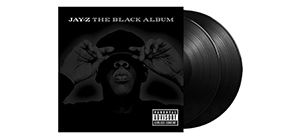
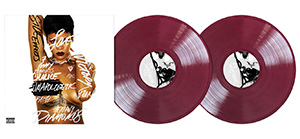
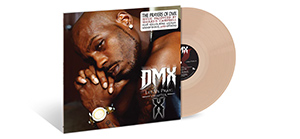
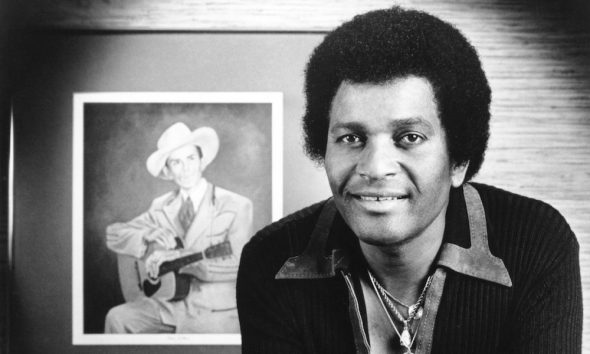
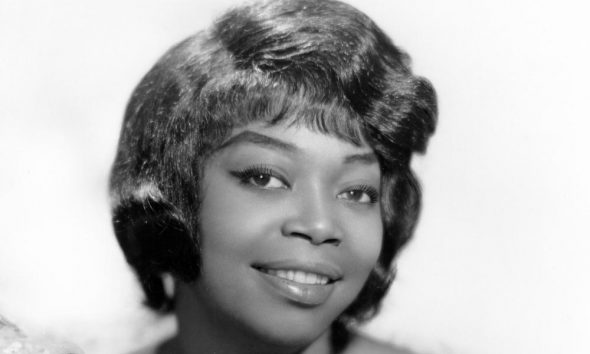
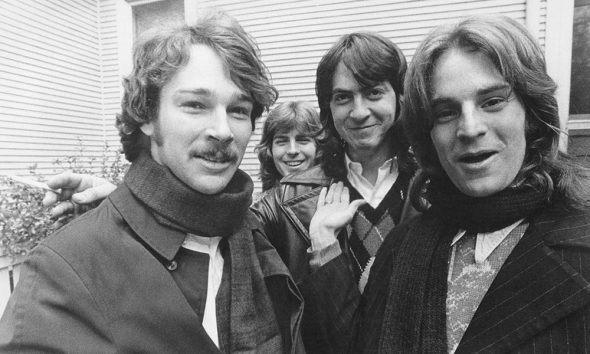
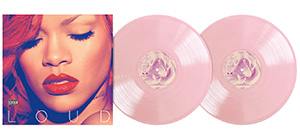


Filgud
March 27, 2018 at 8:33 pm
Es un punto de vista como otro cualquiera. Sin poner fechas concretas para mi, hasta mediados de los 70 hay que hablar de Hard Rock, en la segunda mitad de los 70 se mezcla con el AOR y los comienzos del Heavy para, finalmente, afianzarse a comienzos de los 80. Se nombra un monton de grupos que hacian Hard Rock, nunca, el autentico Heavy empleó ciertas armonias y fraseos de teclados y guitarra como los de muchos de esos grupos de Hard. El Heavy los adopto, acelero y distorsiono para hacerlos suyos. Es mi opinion.
Alan
March 29, 2018 at 2:18 am
Yeah, Grand Funk Railroad… Very under-rated. Great band, especially the early stuff.
Stormseeker
March 29, 2018 at 7:42 am
Hey you forgot important things in the history of HM. I suggest you to listen In-A-Gadda-Da-Vida, by Iron Butterfly, maybe the first Heavy Metal tipical song, and Helter Skelter by Beatles. You will find many typical features of real HM.
Gel Mann
March 28, 2019 at 3:10 am
Predating all the bands talked about in the article was the beggining of Heavey metal : JEFF BECK, with the Yardbirds and in MArch of 1966, when “Becks Bolero” was recorded with Keith Moon, Nicky Hopkins, Jeff beck and John Paul Jones The recording session brought together a group of musicians, including Jimmy Page, Keith Moon, John Paul Jones, and Nicky Hopkins, who later agreed that the line up was a first attempt at what became Led Zeppelin.Jeff Beck claims that he made significant contributions to the composition…the earliest example of Heavy Metal March 1966. !
Gel Mann
March 28, 2019 at 3:11 am
“Rumble” by Link Wray and his Wary Men 1958
Pheet
April 7, 2019 at 10:11 pm
Really, metal could be traced back at least as far as its building blocks are concerned, to the first blues masters. Metal is much more than a “bedfellow” to blues: the very use of guitars as their instrument of choice by blues and jazz guitar legends like Blind Lemon Jefferson, Lonnie Johnson, Eddie Lang, Kokomo Arnold, Robert Johnson, and on to the first well known electric guitar soloing by Charlie Christian (he was not the first electric lead player – just the best) were the very cornerstones rock and roll and metal were constructed upon. Lead guitars, the amplification by Muddy Waters, first uses of distortion like one can hear on albums like Johnny Smith’s legendary album “Moonlight In Vermont” recorded in 1952 and the song “Night And Day” in 1953 by Django Reinhardt shortly before his death and of course the rock and roll explosion were all indelible ingredients of a recipe that modern metal bands still use today.
And there were tons of bands out there doing wild stuff who just never got record deals or only lasted for one or two albums, and we will never know whom all these players were. Maybe metal, as far as its “heaviest”, most rebellious and propulsive is never any more pure than when a weekend band somewhere cranked the volume up, rocked as hard as they could, and brought a good time to friends and maybe a club or two along the way. That also is rock and roll, and to fail to connect that all important point is to fail to understand metal’s ultimate purpose in popular music.
Eric
May 2, 2019 at 7:01 am
Lots of mistakes in this article. One being that the first Marshalls in 1962 were louder than other amps of the time. The JTM45s were rated at 45 watts even thought they generally only put out 30 or so. They were pretty close copies of the late 50s Fender Bassmans. Fender developed the first 100 watt guitar amp along with Dick Dale in 1960 (two years before the JTM45) called the Showman. Also Dick Dale, who wasn’t even mentioned in this article is considered by many to be the father of heavy metal. It’s hard to say who started it but to leave out Alice Cooper who’s first band the Spiders in 68 predates a lot of the bands mentioned here is too bad as well. In fact to leave out The Who which is a band that started before any mentioned in the article when Pete Townshend pretty much invented the power chord is another serious omission. Oh well, cool article anyway.
GuiPoZa
July 14, 2019 at 11:55 pm
Aunque el concepto heavy metal es mucho más antiguo de lo que nosotros creemos ,me voy a remitir a la década del 60’los primeros atisbos con algunos rasgos o sonidos propios de este estilo o forma musical aparecen con las bandas Kink y the Who y más tarde un poco más estructurada The Beatles con Helter Skelter.Lo demás es Historia con todos los grupos mencionados.P.D.Es una opinión nada más.
chris56lewis
October 11, 2019 at 4:13 pm
Does address one ‘Chicken and Egg’ style argument that I have always struggled with – did the music style drive the development of audio technology or was it developments in audio technology that facilitated the evolution of the music?
Beau Ravn
January 15, 2020 at 2:29 am
While the replies may be valid in terms of the development of the Heavy Metal sound (aspects of which can even be traced back to the Baroque period in terms of organ sounds utilised by Iron Butterfly in Ina-gadda-da-vida and other early HM bands from the late 1960’s), this article is really about the use of the term ‘Heavy Metal’ as a music genre, i.e. “The origins of heavy metal are often disputed… We attempt to track down the history of the term and answer the question, Where does heavy metal come from?” But as stated, aspects of the music itself have their origins in a variety of eras and with a host of musicians. In a sense, to find an origin for the ‘sound’ of HM, you really need to explore how different musicians developed certain guitar sounds (Blues), the history of amps (Marshall/Fender) used to drive those guitars home, the origin of different organ/synth sequences (Baroque/Renaissance) and arguably the most important of all, the origin of different drum beats (African tribal) … then put all that together with a good smattering of creative genius (God/divine intervention) 😉
Ken F
April 17, 2022 at 4:55 am
An entire article and it takes until the very last sentence to even mention the name Black Sabbath, the real founders of heavy metal. There’s hard rock, heavy rock, metal, and heavy metal. Blue Cheer might have made loud heavy rock “music,” but it was virtually un-listenable. In short, it sucked. To call that the beginnings of heavy metal is kind of a joke.
Sebastian Baca
April 24, 2023 at 9:37 pm
Not only Cream, but the Kinks, Who, Yardbirds w/Jeff Beck and Jimi Hendrix were instrumental in the foundation of came to be labeled “heavy metal”!
Samuel Poe
June 17, 2023 at 2:16 pm
Jimi Hendrix Experience popularized heavy metal. According to Chandler the term “Heavy Metal,” was initiated by the JHE.
Heavy Metal was created by accident at Sam Phillips Memphis Recording Service (aka Sun Records) in 1951. Ike Turner and his other band members, went to MRS and one of their amps was damaged on the trip to MRS.
Phillips, Turner and the other people there tried fixing the amp. They put this and that in then went to work.
Phillips could have rejected Rocket 88 yet he didn’t. He was impressed by the unusual sound from the broken amp. Rocket 88 is not only the first Rock song it’s the first heavy metal song.
It’s more appropriate to call Rocket 88 the first heavy metal song than first Rock song. Rock songs had been around for decades by 1951.
Howlin’ Wolf put the amp to work in some of his early songs at MRS. Elvis and his band experimented with an early form of heavy metal. They continued to experiment with heavy metal in the early and mid 1960’s.
Elvis wanted something more explosive and he did pay attention to what was going on. He knew about the 1961 song “Don’t Worry” by Marty Robbin’s. Grady Martin played guitar solo on “Don’t Worry” and created his own instrumental in 1961 he named The Fuzz.
The Ventures asked for the new musical instrument and used it on their song “2,000 Pounds of Bee” in 1962.
Grady can be credited for what we now know as heavy metal. His 1961 instrumental The Fuzz will be easily defined as heavy metal.
Link Wray was very important in experimenting with hard rock in the late 1950’s with the song “Comanche” and instrumentals “Rawhide and Rumble.”
Wray and his band continued to experiment with heavy metal in the early and mid 1960’s. They were first to play music backwards. They released the heavy metal song “I’m Branded” in April 1965.
Elvis was very influenced by black rock stars. Your here that in many of his early and mid 1960’s songs like “It Feels So Right, Reconsider Baby, Like a Baby, Little Sister, I Feel So Bad, Gonna Get Back Home Somehow, Night Life, Slowly But Surely, Spinout, Wolf Call, ect.”
It was the Jimi Hendrix Experience that popularized the fuzz guitar or heavy metal music. Find Grady Martin’s The Fuzz at YouTube. They created a new instrument to duplicate Martin’s sound and named it The Fuzz Pedal. However, it goes back to Rocket 88. They never forget about the guitar sound in Rocket 88. Howlin’ Wolf really made good use of it.